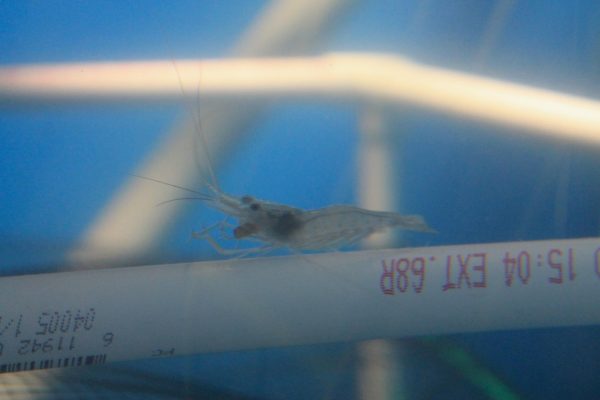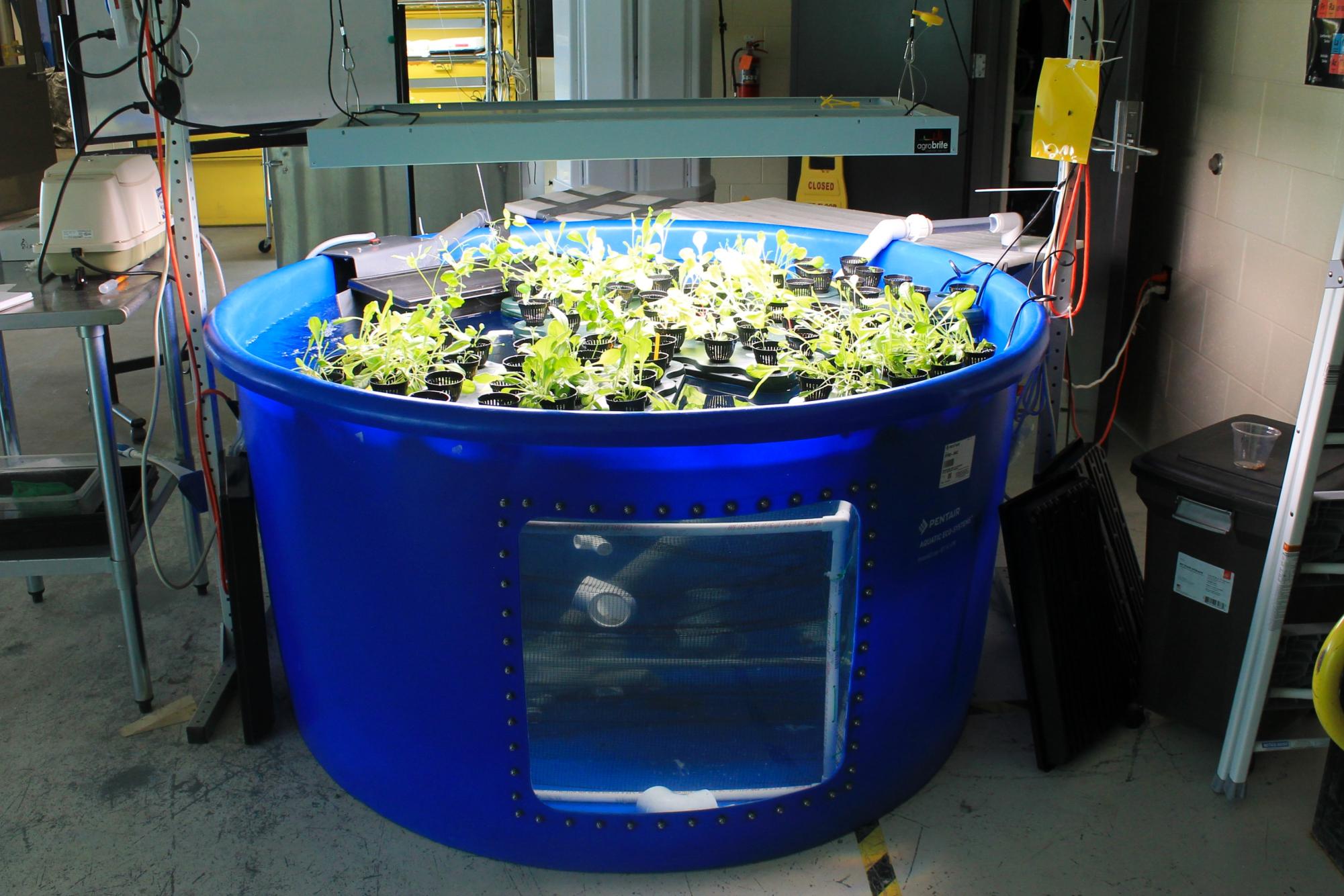Deep in the back of the newly renovated Jacobetti Complex is the Indoor Agriculture Lab, containing a room full of plants and a giant aquaponics tank full of shrimp. Aquaponics is a form of agriculture that combines raising fish in tanks with soil-less plant culture. Instead of traditional soil, plants grow in nutrient-rich water.
The 400-gallon tank has about 50 Malaysian prawns living in a closed ecosystem with a variety of plants like lettuce, beans and herbs floating on top.
The shrimp are being raised in this closed ecosystem as an experiment to see which plants do better within that ecosystem. This shrimp tank is part of the IA220: Innovative Growing Systems course.
“This system utilizes a nearly closed loop where, unlike traditional aquaculture, we rarely have to change out the water because the plants absorb waste from the shrimp,” said Lehren Olk-Szost, assistant professor of tech and occupational sciences.

The prawns are just a few inches long and transparent, blending in with the water surrounding them. Their food is the only outside element that infiltrates the ecosystem. They eat the food and excrete waste which is essentially ammonium. That is then broken down by nitrifying bacteria in the water and the plants end up absorbing that. The nitrates then clean and filter the water rather than letting them accumulate.
“It is definitely everywhere, and so they’re in the soil doing the same thing,” Olk-Szost said. “You have nitrifying bacteria in soil doing the same thing, turning ammonia into processing and that breaking it down into nitrates, which are better absorbed by the plant typically.”
These shrimps act similarly to earthworms in soil ecosystems. The students are using this research to find out how aquaponics achieve less waste and use less resources than just aquaculture systems.
According to Oklahoma State University, the advantages of aquaponic culture include less water use, no need for soil, nutrients coming from fish with no added fertilizers and year-round production. Disadvantages include the costs, high energy requirements and the fact that more skills and knowledge from two separate agricultural fields are required with limited plant selection.
“I’m all for the [IA 220 students] experimenting and seeing what works and what doesn’t work, Olk-Szost said. “We get to have a learning experience.”








